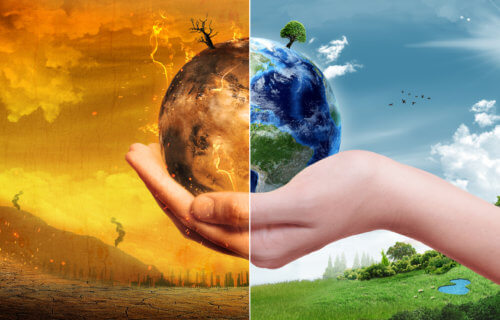ADELAIDE, Australia — More than a quarter of the world’s animals and plants will go extinct by the end of the century, according to a scientific model created by one of Europe’s most advanced supercomputers.
Scientists say 10 percent of plants and animals will disappear by 2050, with the number rising to 27 percent by 2100. This extinction “cascade” means that children born today might well be the last generation to see elephants or koalas, the researchers warn.
The researchers say the world is undergoing its “sixth mass extinction event” driven by global warming and changes to land use. The team says earlier models of extinction trajectories are not particularly useful because they do not account for co-extinctions, where species go extinct because others on which they depend on die off.
“Think of a predatory species that loses its prey to climate change,” says study author Professor Corey Bradshaw of Flinders University in a statement.
“The loss of the prey species is a ‘primary extinction’ because it succumbed directly to a disturbance. But with nothing to eat, its predator will also go extinct, a co-extinction. Or, imagine a parasite losing its host to deforestation, or a flowering plant losing its pollinators because it has become too warm,” Prof. Bradshaw continues.
“Every species depends on others in some way.”
Scientists are trying to find real-world tipping points
Until now, researchers have not been able to interconnect species on a global scale in order to work out how much additional loss will take place through co-extinctions.
While earlier studies have examined different aspects of extinctions such as the direct effects of climate change and the loss of habitats on species fates, these have not been combined to predict the scale of extinctions.
For the study, academics used one of Europe’s most powerful supercomputers to make “synthetic Earths” complete with virtual species and more than 15,000 food webs.
The networks were linked by whom eats whom and then climate and land use changes were applied to the system in order to inform future projections.
Virtual species were able to recolonize regions as the climate changed, adapt to changing conditions, go extinct because of global heating, or fall victim to an extinction cascade.
“Essentially, we have populated a virtual world from the ground up and mapped the resulting fate of thousands of species across the globe to determine the likelihood of real-world tipping points,” says study author Dr. Giovanni Strona from the University of Helsinki.
“We can then assess adaptation to different climate scenarios and interlink with other factors to predict a pattern of coextinctions.”
“By running many simulations over three main scenarios of climate until 2050 and 2100 — the so-called Shared Socioeconomic Pathways (SSP) from the Intergovernmental Panel on Climate Change (IPCC), we show that there will be up to 34% more co-extinctions overall by 2100 than are predicted from direct effects alone,” Dr. Strona says.
Co-extinctions triple the threat to vulnerable species
Prof. Bradshaw says what is even more frightening is that co-extinctions will raise the overall extinction rate of the most vulnerable species by up to 184 percent by the end of the century, according to the new projections.
“This study is unique, because it accounts also for the secondary effect on biodiversity, estimating the effect of species going extinct in local food webs beyond direct effects. The results demonstrate that interlinkages within food webs worsen biodiversity loss, to a predicted rate of up to 184% for the most susceptible species over the next 75 years,” Bradshaw explains.
“Compared with traditional approaches to predicting extinctions, our model provides a detailed insight into variation in patterns of species diversity responding to the interplay of climate, land use, and ecological interactions,” the researcher continues.
“Children born today who live into their 70s can expect to witness the disappearance of literally thousands of plant and animal species, from the tiny orchids and the smallest insects, to iconic animals such as the elephant and the koala … all in one human lifetime.”
Bradshaw adds that despite acknowledging that climate change is a major driver of extinction, the new study demonstrates that humans have underestimated its true impact on the diversity of life on Earth.
“Without major changes in human society, we stand to lose much of what sustains life on our planet,” the team concludes.
Dr. Stona says that the findings leave “no doubt” that climate change is mainly responsible for most extinctions globally.
The findings appear in the journal Science Advances.
South West News Service writer Gwyn Wright contributed to this report.

